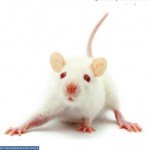fever
Image from ProjectManhattan (Own work) [CC BY-SA 3.0 (http://creativecommons.org/licenses/by-sa/3.0)], via Wikimedia Commons
You probably already knew that fevers can cause some people to develop seizures. According to the National Institutes of Health, these so-called 'febrile seizures' can happen at temperatures of 102.2 degrees F and above and are most-often seen in children. The good news is that this type of seizure is usually short and does not often cause any long-term damage to the brain.
In a new study published in Physiological Reports, Researchers at Emory University (…
Chick image By Markus Koljonen (Own work) [CC BY-SA 3.0] via Wikimedia Commons
New research published in the American Journal of Physiology Regulatory, Integrative and Comparative Physiology shows that bacterial infections increase the production of nitric oxide in chicks, which is similar to what happens in rodents. The increase in nitric oxide is thought to be related to the development of fever. In fact, when nitric oxide production was blocked, thermogenesis was inhibited and infected chicks began to huddle more to increase body temperature.
Source:
Dantonio V, Batalhão…
Shivering is one mechanism by which heat is produced in the body. Heat production is called thermogenesis. Another mechanism is through nonshivering thermogenesis regulated by brown fat (i.e. adipose). This second type of heating mechanism kicks in when we need extra heat production such as a postnatal infant, someone developing a fever, an animal arousing from hibernation, eating, or in the case of the current study, stress.
A recent study published in the American Journal of Physiology provides evidence that during stressful events brown adipose tissue can elevate body temperature through…
